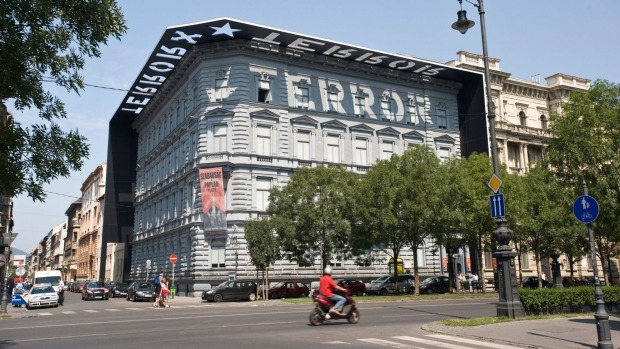

CONTACT US
1052 Budapest, Jane Haining Quay, Dock 11.
Customer support is available daily from 9:00 to 22:00.
Introduction

Budapest, a city steeped in history and resilience, is home to a poignant testament to its tumultuous past—the House of Terror. Located at 60 Andrássy Avenue, this haunting museum stands as a reminder of the horrors endured by the Hungarian people during two oppressive regimes—the Nazi and Soviet occupations. In this article, we embark on an emotional journey through the House of Terror, delving into its history, the stories it tells, and the lessons it imparts to present and future generations.
Origins and Historical Context
The House of Terror, known locally as “Terror Háza,” occupies the building that once housed the headquarters of the notorious Nazi and Arrow Cross Party during World War II. After the war, Hungary fell under the grip of the Soviet Union, and the building became the base for the equally oppressive communist secret police—the ÁVH.
The dual use of the building by two of history’s most repressive regimes sets the stage for the House of Terror’s chilling narrative—a narrative that showcases the atrocities committed by both regimes and the resilience of the Hungarian people in the face of unimaginable adversity.
Exhibitions: Unraveling the Terror
As visitors step through the imposing entrance of the House of Terror, they are transported into a world of darkness and sorrow. The museum’
s powerful exhibits bring to life the horrors of the past, revealing the agonizing stories of those who suffered under Nazi and Soviet rule.
The museum is divided into several thematic sections, each meticulously curated to provide an immersive experience. From rooms depicting the horrors of Nazi occupation to chilling displays of the surveillance methods employed by the secret police during the communist era, the House of Terror spares no detail in portraying the nightmarish reality faced by Hungarians during those dark times.
The Cellars: A Journey to the Depths of Despair
One of the most haunting sections of the museum lies in its cellars, where the claustrophobic cells used to imprison and torture dissenters are preserved as a stark reminder of the brutality endured by political prisoners. These underground chambers, filled with a haunting silence, leave visitors with a profound sense of the suffering and courage of those who were subjected to unimaginable cruelty for their beliefs.
Faces of Resistance: Honoring the Heroes
While the House of Terror delves into the depths of despair, it also pays tribute to the countless heroes who resisted the oppressive regimes. The museum honors the memory of those who fought for freedom and democracy, often at the cost of their own lives.
From resistance fighters and intellectuals to ordinary citizens who dared to speak out against tyranny, their stories of bravery and sacrifice are celebrated in the exhibits. These individuals, immortalized within the walls of the House of Terror, stand as a testament to the indomitable spirit of the Hungarian people.
Preserving Memory: The Triumph of Remembrance
The House of Terror is not merely a museum of historical artifacts; it is a living institution
that strives to educate future generations about the importance of preserving memory. It serves as a solemn reminder that societies must confront their past, however painful, to build a future that safeguards human rights, democracy, and freedom.
Through its thought-provoking exhibits and educational programs, the museum fosters dialogue on the importance of democracy and the dangers of totalitarianism. By learning from the past, the House of Terror encourages visitors to become active participants in shaping a just and inclusive society, free from oppression and fear.
Conclusion: A Testament to Human Resilience
The House of Terror stands as an evocative monument to the resilience of the human spirit, a testament to the strength of those who endured unimaginable suffering and yet found the courage to resist and hope for a better future.
As visitors exit the museum, they are left with a profound sense of humility and a responsibility to uphold the values of freedom, democracy, and human rights. The House of Terror compels us all to be vigilant against the forces of oppression, ensuring that the haunting echoes of the past serve as a constant reminder of the importance of cherishing and defending the principles that underpin a just and compassionate society.
Budapest’s House of Terror is more than just a historical museum; it is a solemn and transformative experience that touches the very core of our humanity. By acknowledging the past and preserving its memory, the House of Terror offers a beacon of hope, inspiring us to create a future where love and empathy triumph over hate and tyranny.